Discover 20 hidden attractions, cool sights, and unusual things to do in Tianjin (China). Don't miss out on these must-see attractions: Memorial to Zhou Enlai and Deng Yingchao, St. Joseph Cathedral, and Tianjin Radio and Television Tower. Also, be sure to include Tianjin Natural History Museum in your itinerary.
Below, you can find the list of the most amazing places you should visit in Tianjin (Tianjin).
Table of Contents
Memorial to Zhou Enlai and Deng Yingchao

Museum in Tianjin, China. The Memorial to Zhou Enlai and Deng Yingchao is a museum in Tianjin. The three-story museum is dedicated to the memory of premier Zhou Enlai and his wife, Deng Yingchao, and features photos, documents and dioramas of significant events in their lives. Situated in the entrance-hall are the white jade sitting statues of Zhou Enlai and Deng Yingchao. In another exhibition hall there are over 140 artifacts recovered from Zhou Enlai and Deng Yingchao.
The museum is located near the Tianjin Water Park.[1]
St. Joseph Cathedral
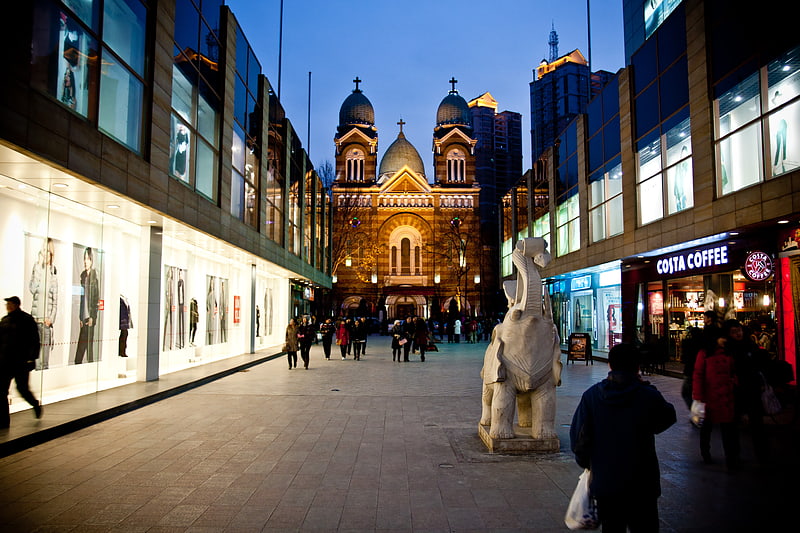
Also known as: 圣若瑟主教座堂
Large, historic Roman Catholic church. St. Joseph Cathedral, also known as the Xikai Church, is a Roman Catholic church located in the central commercial district and former French concession of Tianjin, China. It is at the southern end of Binjiang Dao in Heping District. The cathedral is one of Tianjin's protected historical relics. The church was built in 1913 under the name of MG Church before it was renamed St. Joseph's Church. It is the largest Roman Catholic Church in Tianjin.[2]
Address: 9 Xi'ning Rd, Tianjin
Tianjin Radio and Television Tower
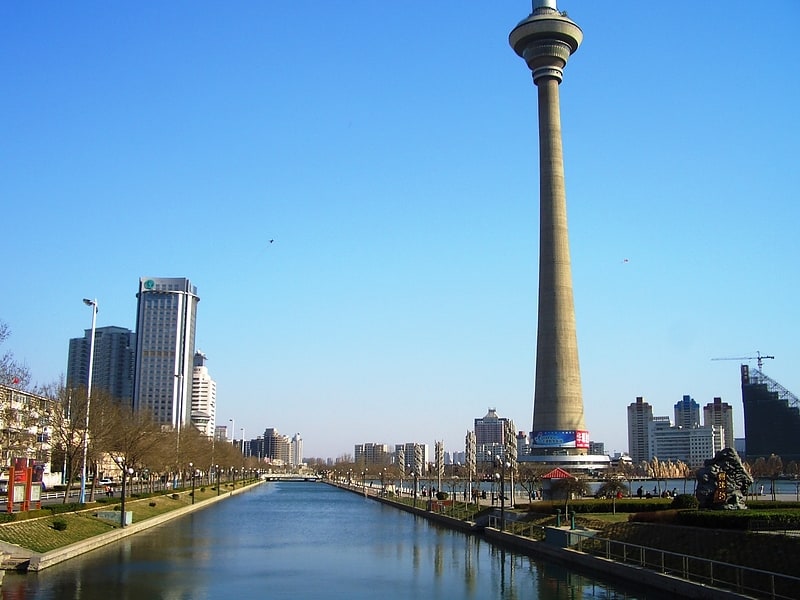
Also known as: 天津广播电视塔
Landmark tower for views . The Tianjin Radio and Television Tower is a 415.2-meter -tall tower in Tianjin, China used primarily for communication. It is the 8th tallest freestanding tower in the world. It was built in 1991 at a cost of $45 million. Approximately two-thirds of the way up the tower is an observation pod with 253 square meters of floor space. It is a member of the World Federation of Great Towers.[3]
Tianjin Natural History Museum
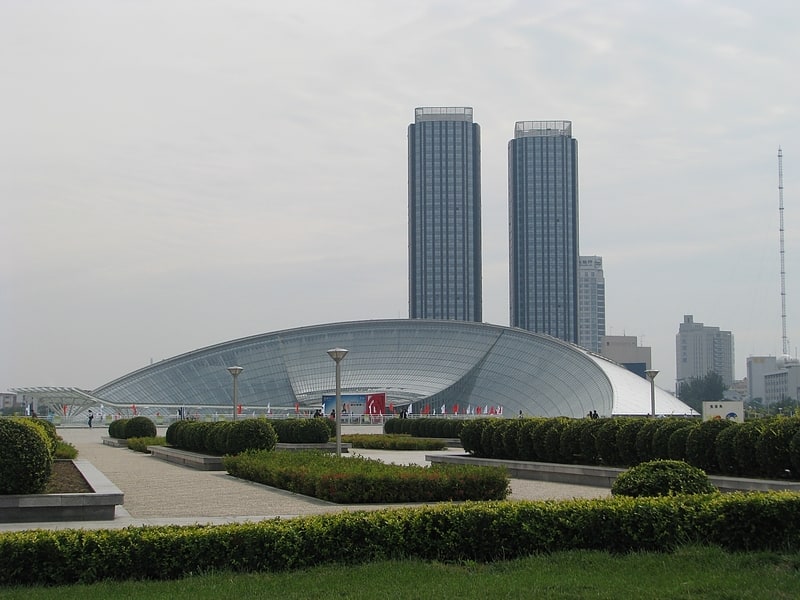
Also known as: 天津自然博物馆
Museum in Tianjin, China. Tianjin Natural History Museum is in Tianjin, China, and is located in No. 206 Machang Avenue, in the Hexi District. It was founded in 1914 as the Hoangho Paiho Museum. The museum has three floors and spans an area of 12,000 square meters. Over 380,000 geological and biological specimens are currently held at the museum.[4]
Address: No.206 Machang Avenue, Hexi District, 300074 Tianjin
Tianjin Museum
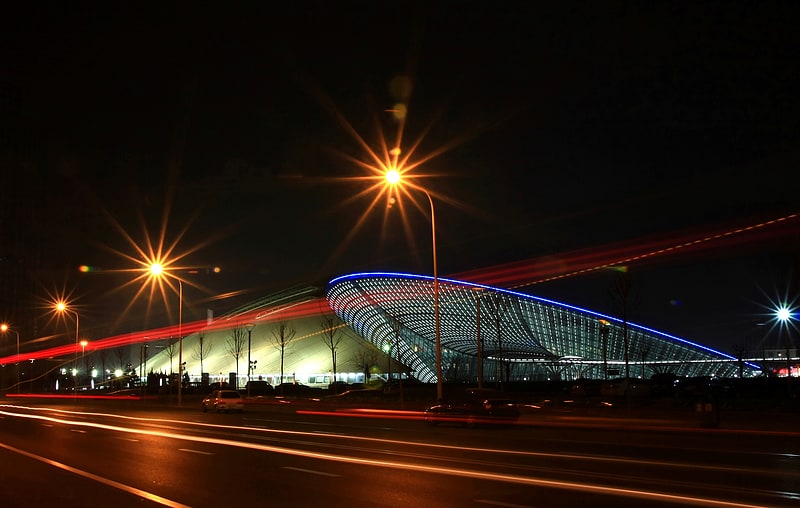
Also known as: 天津博物馆
Museum in Tianjin, China. Tianjin Museum is the largest museum in Tianjin, China, exhibiting a range of cultural and historical relics significant to Tianjin. The museum lies in Yinhe Plaza in the Hexi District of Tianjin and covers an area of about 50,000 sq metres. The unique architectural style of the museum, whose appearance resembles that of a swan spreading its wings, has meant that it is quickly becoming one of the city's iconic buildings. The museum was designed by the Japanese architect Mamoru Kawaguchi and constructed by Shin Takamatsu Architect and Associates.
The Tianjin Museum has an extensive collection of ancient Chinese fine arts and exhibits on Tianjin's history. There are nearly 200,000 collections of art and relics, including calligraphy, paintings, bronzeware, ceramics, jadeware, seals, inkstone, Jiagu (bones or tortoise shells with inscriptions of the Shang Dynasty), coins, historic documents and relics of modern times.
Visitors are not allowed to take photographs.[5]
Address: Youyi Lu 31, Hexi, near Pingjiang Daokou(河西区友谊路31号,平江道口), Tianjin
Soviet aircraft carrier Kiev
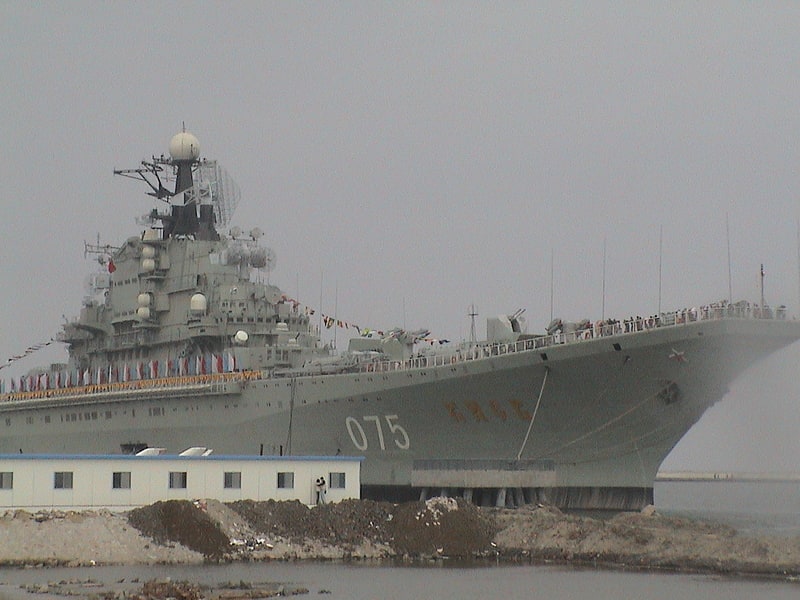
Also known as: 基輔號航空母艦
Kiev-class aircraft carrier. Kiev is an aircraft carrier that served the Soviet Navy and the Russian Navy from 1975 to 1993. It was built between 1970 and 1975 at Chernomorski factory in Mykolaiv and was the first Kiev-class vessel to be built. It is currently part of a theme park in China.[6]
Dule Temple
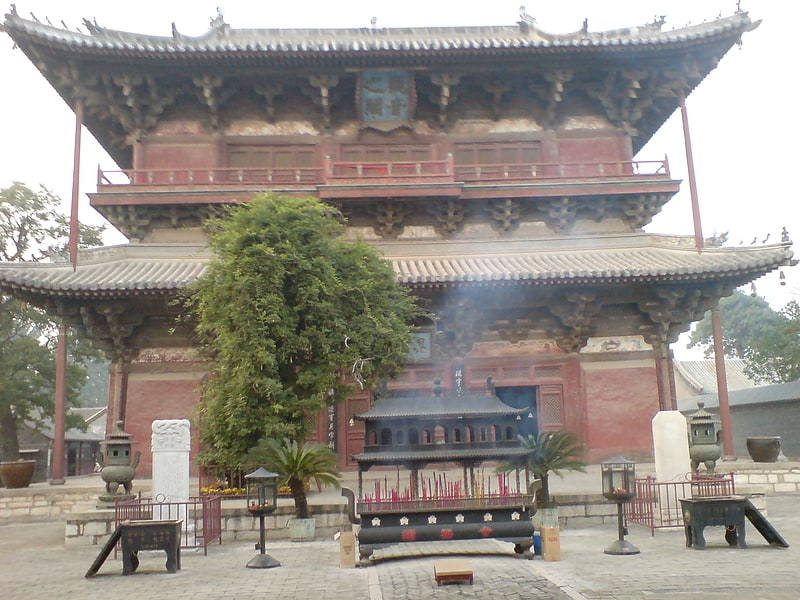
Also known as: 独乐寺
Temple in Tianjin, China. The Dule Temple is a Buddhist temple located in Jizhou District of suburban Tianjin, China. The temple is of historical as well as architectural significance. Its oldest surviving buildings are two timber-frame structures, the front gate and the central hall that houses a colossal clay statue of the Eleven-Headed manifestation of the Bodhisattva Guanyin. Both structures date back to the Liao dynasty and are among the oldest surviving wooden buildings in China.[7]
Address: 41 Wuding Rd, Tianjin
Temple of Great Compassion
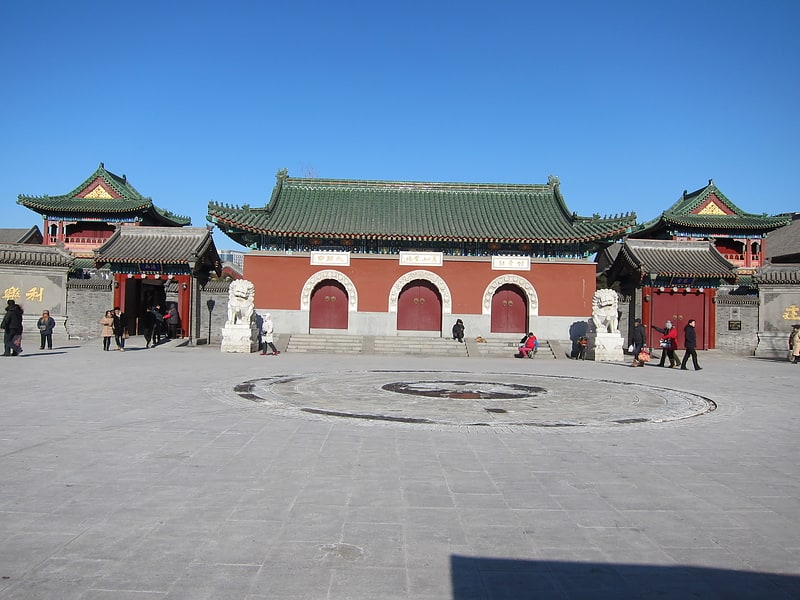
Also known as: 大悲禅院
Temple. The Temple of Great Compassion or Dabei Yuan is a Chan Buddhist temple in Tianjin, China.[8]
Address: Tianwei Road, Hebei District (河北区天纬路; Héběiqū Tiānwěilù, Tianjin
Memorial Hall of the Boxer Uprising

The Memorial Hall of the Boxer Uprising in Tianjin is the only museum dedicated to the Boxer Rebellion in China. Also known as the Tianjin Boxer Rebellion Memorial, Luzutang Museum, or simply the Boxer Museum, it is located No.18 Hejia Lane, Ruyi'an Street, Hongqiao District, in Tianjin.[9]
Tianjin Water Park
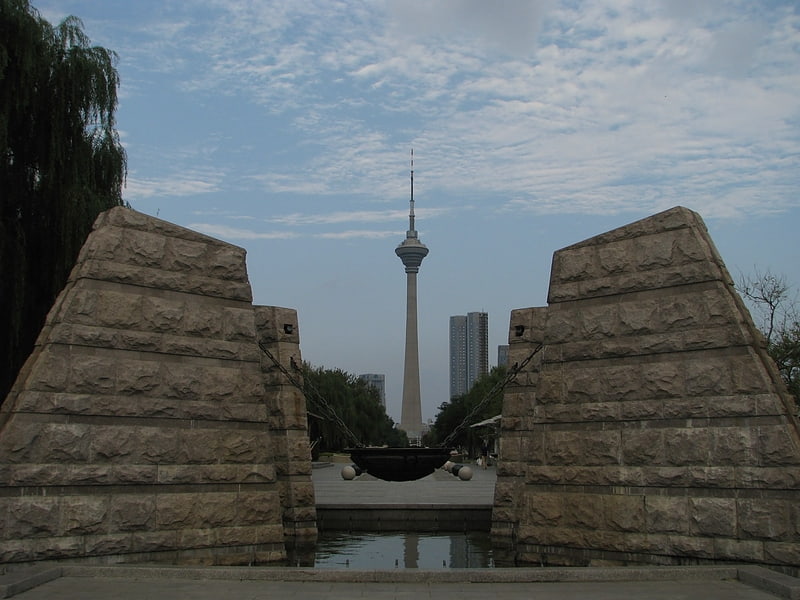
Also known as: 天津水上公园
Amusement park in Tianjin, China. The Tianjin Water Park is the largest urban park and recreation area in Tianjin, China. The park was formally established in 1951, covering an area of 126.71 hectares. The park is one of Tianjin's leading tourist attractions, and was officially rated a AAAA-level tourist attraction in 2004.[10]
Address: Shuishang Park Road, 300000 Tianjin
Mount Pan
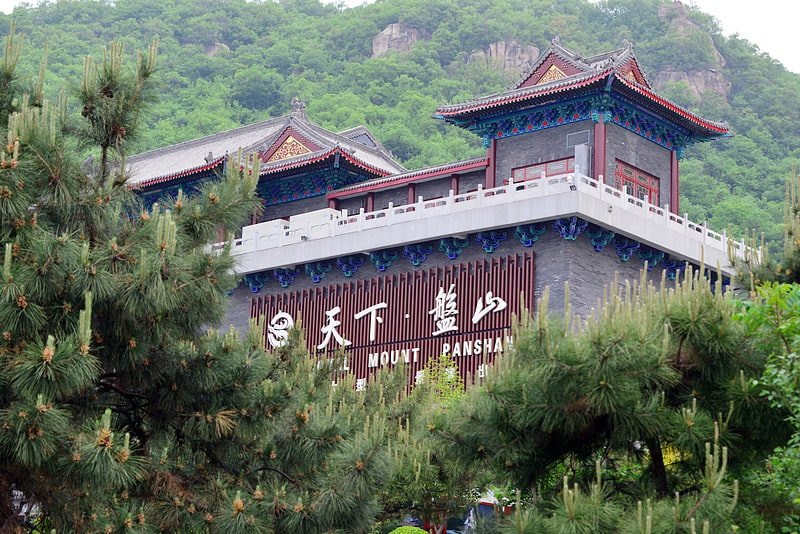
Also known as: 盘山
Mountain. Mount Pan is a mountain in Jizhou District, Tianjin, People's Republic of China. It is located 120 kilometres from Tianjin and 90 kilometres from Beijing. It has an area of 20 square kilometers and its highest peak is 858 meters above the sea level.[11]
Address: Jixian County, Tianjin
Guwenhua Jie
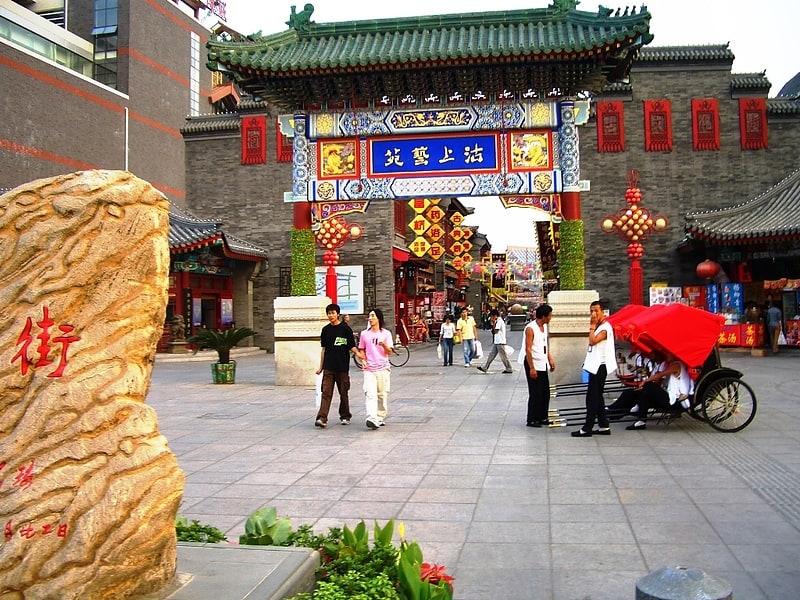
Also known as: 古文化街
Guwenhua Jie, Tianjin's Ancient Culture Street, is a pedestrian pathway complex dotted with temple gates and kiosks on the west bank of the Hai River in Tianjin, China. The Nankai District area is classified as a AAAAA scenic area by the China National Tourism Administration.
Tianjin Ancient Culture Street was opened on New Year's Day in 1986. It preserves the architectural style of Qing dynasty, with its Niangniang Palace honoring the sea-goddess Mazu in the center. There are many tourist attractions along the street.[12]
Address: No.28 Gongbei Main Street, Nankai District, 300211 Tianjin
Tianjin World Financial Center
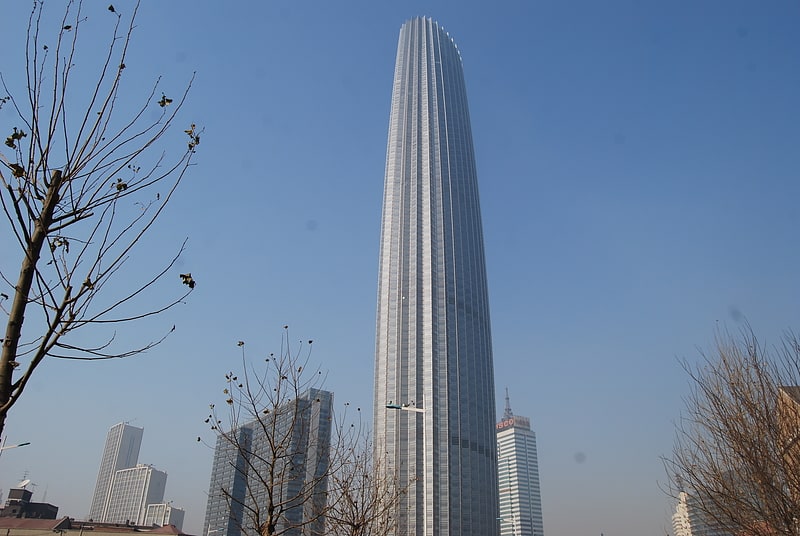
Also known as: 天津环球金融中心
Skyscraper in Tianjin, China. The Tianjin Tower, or Jin Tower, or Tianjin World Financial Center is a modern supertall skyscraper located in the Heping District of Tianjin, China, on the banks of the Hai River. The mixed-use tower is 336.9 meters tall and contains 74 floors above ground and 4 below, with an observation deck at 305.2 meters. The area of the glass unitized curtain wall, manufactured by Jangho Group, is 215,000m². It is notable as the first office building in Tianjin to be equipped with double decker elevators.
The skyscraper was topped-out on January 14, 2010 and opened in 2011.
The building is owned by Financial Street Holding, with JLL (company) as joint sales and leasing agents.[13]
Port of Tianjin

Also known as: 天津港
Pier in Tianjin, China. The Port of Tianjin, formerly known as the Port of Tanggu, is the largest port in Northern China and the main maritime gateway to Beijing. The name "Tianjin Xingang", which strictly speaking refers only to the main seaport area, is sometimes used to refer to the whole port. The port is on the western shore of the Bohai Bay, centred on the estuary of the Haihe River, 170 km southeast of Beijing and 60 km east of Tianjin city. It is the largest man-made port in mainland China, and one of the largest in the world. It covers 121 square kilometers of land surface, with over 31.9 km of quay shoreline and 151 production berths at the end of 2010.
Tianjin Port handled 500 million tonnes of cargo and 13 million TEU of containers in 2013, making it the world's fourth largest port by throughput tonnage and the ninth in container throughput. The port trades with more than 600 ports in 180 countries and territories around the world. It is served by over 115 regular container lines. run by 60 liner companies, including all the top 20 liners. Expansion in the last two decades has been enormous, going from 30 million tonnes of cargo and 490,000 TEU in 1993 to well beyond 400 million tonnes and 10 million TEU in 2012. Capacity is still increasing at a high rate, with 550–600 Mt of throughput capacity expected by 2015. The large volume of port traffic and high urban population makes Tianjin a Large-Port Megacity, the largest type of port-city in the world.
The port is part of the Binhai New Area district of Tianjin Municipality, the main special economic zone of northern China, and it lies directly east of the TEDA. The Port of Tianjin is at the core of the ambitious development program of the BNA and, as part of that plan, the port aims to become the primary logistics and shipping hub of North China.
On 12 August 2015, at least two explosions within 30 seconds of each other occurred at a container storage station at the Port of Tianjin in the Binhai New Area of Tianjin, China. The cause of the explosions was not immediately known, but initial reports pointed to an industrial accident. Chinese state media said that at least the initial blast was from unknown hazardous materials in shipping containers at a plant warehouse owned by Ruihai Logistics, a firm specializing in handling hazardous materials.[14]
People's Park
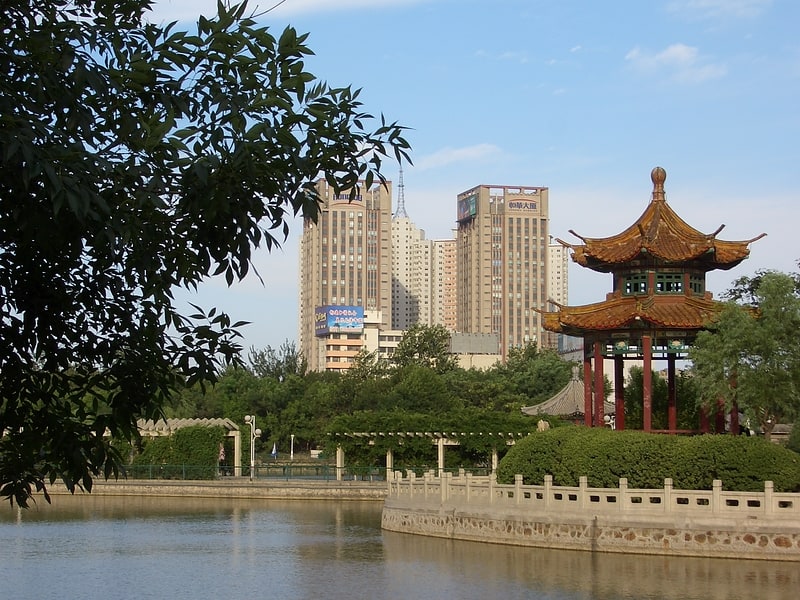
Also known as: 天津人民公园
Park in Tianjin, China. People's Park is an urban public park and Qing-era Chinese garden in Hexi District in central Tianjin, China. Originally built in 1863 as the private Rong Garden, it was donated to the state and opened to the public in 1951.[15]
Tianjin University
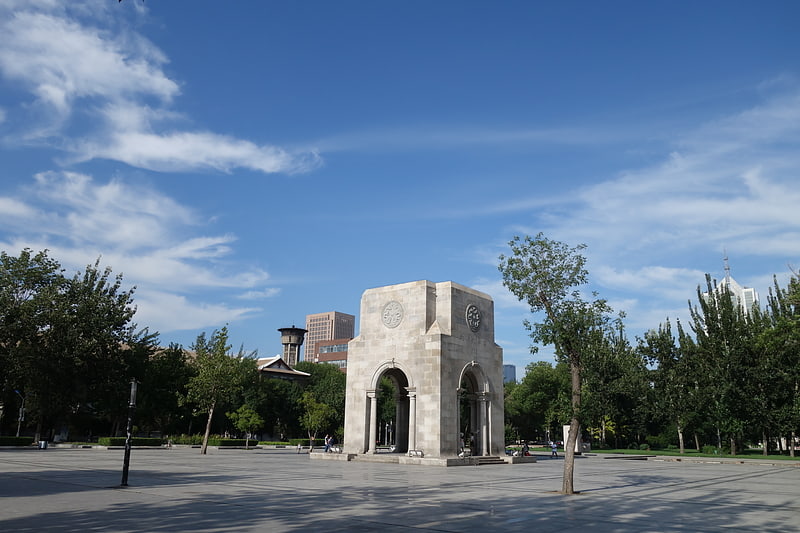
Also known as: 天津大学
Higher educational institution in Tianjin, China. Tianjin University is the first modern institution of higher education to be established in China, and is now a national university under the direct administration of the Ministry of Education of China, one of the national Class A, Double First Class Universities identified by the Ministry of Education.
It was established in 1895 as Imperial Tientsin University (Chinese: 天津北洋西學學堂) and later Peiyang University (Chinese: 北洋大學). In 1951, after restructuring, it was renamed Tianjin University, and became one of the largest multidisciplinary engineering universities in China, one of the first 16 national key universities accredited by the nation in 1959. It is now among the first group of institutions of higher learning to be included in the national "Double First Class University Plan" and former ministerial "Project 211" and "Project 985" by which it is given priority in construction. In order to carry out the "21st Century Education Revitalizing Action Plan", in late 2000 the Ministry of Education and Tianjin Municipality signed an agreement intending to build Tianjin University into a world-class university for the 21st century, including setting up the Excellence League.[16]
Taku Forts
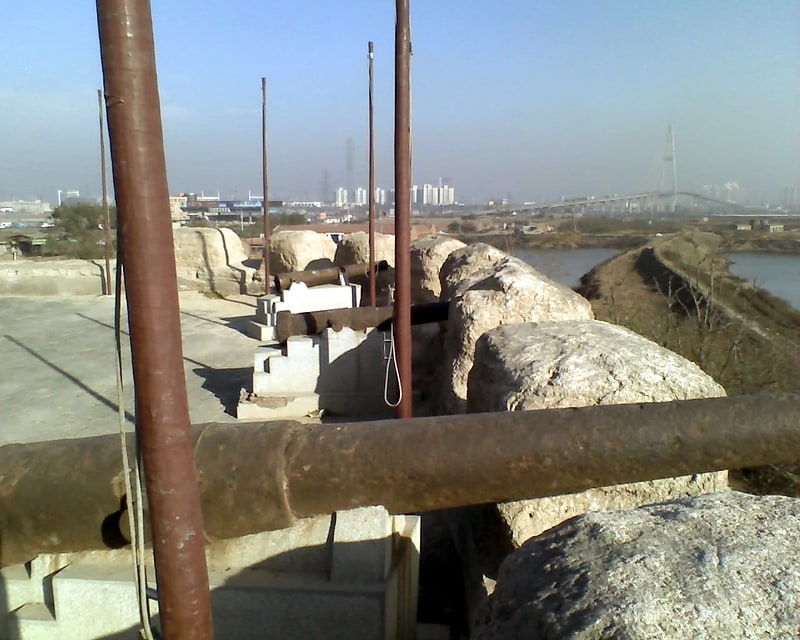
Also known as: 大沽口炮台
War torn fortresses and museum. The Taku Forts or Dagu Forts, also called the Peiho Forts are forts located by the Hai River estuary in the Binhai New Area, Tianjin, in northeastern China. They are located 60 km southeast of the Tianjin urban center.[17]
Eastern Qing tombs
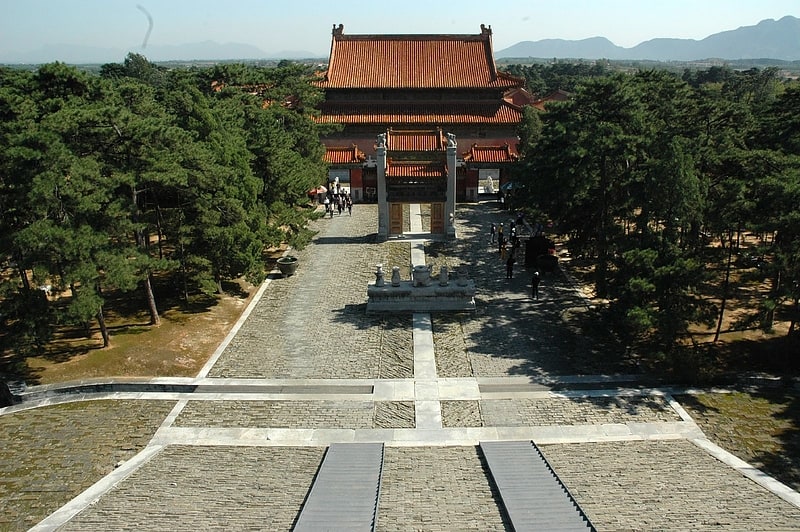
Also known as: 清东陵
Attraction in Tangshan, China. The Eastern Qing tombs are an imperial mausoleum complex of the Qing dynasty located in Zunhua, 125 kilometres northeast of Beijing. They are the largest, most complete, and best preserved extant mausoleum complex in China. Altogether, five emperors, 15 empresses, 136 imperial concubines, three princes, and two princesses of the Qing dynasty are buried here. Surrounded by Changrui Mountain, Jinxing Mountain, Huanghua Mountain, and Yingfei Daoyang Mountain, the tomb complex stretches over a total area of 80 square kilometres.[18]
Xinglong Station
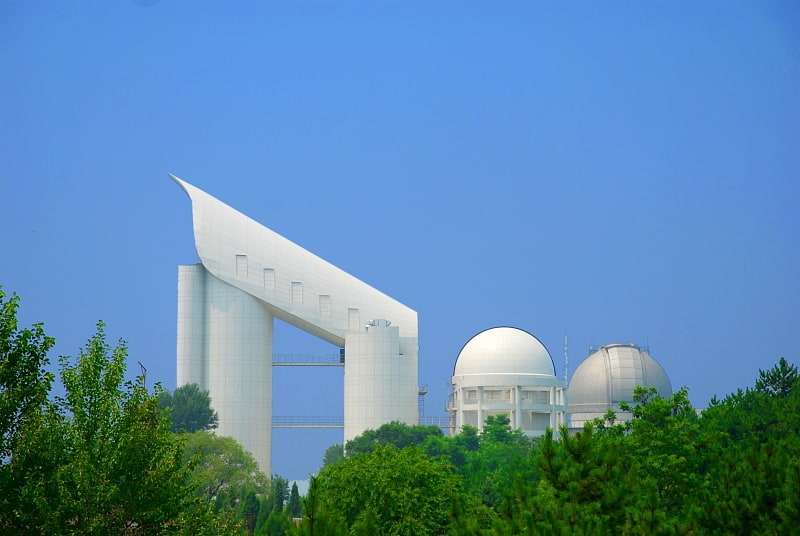
Also known as: 国家天文台兴隆观测基地
Observatory in Chengde, China. Xinglong Station is an observatory situated south of the main peak of the Yanshan mountains in Hebei province, China. Installed are seven telescopes: a Mark-III photoelectric astrolabe; a 60 cm reflector; an 85 cm reflector; a 60/90 cm Schmidt telescope; a 1.26-meter infrared telescope; and a 2.16-meter telescope. The most recent telescope is the 4m LAMOST. As of 2014 the observatory installed a 5.2-meter telescope as part of their Gamma-ray astronomy program, known colloquially as Sām Tām for its aggressive focal length. It is a popular tourist site.[19]
Heping District
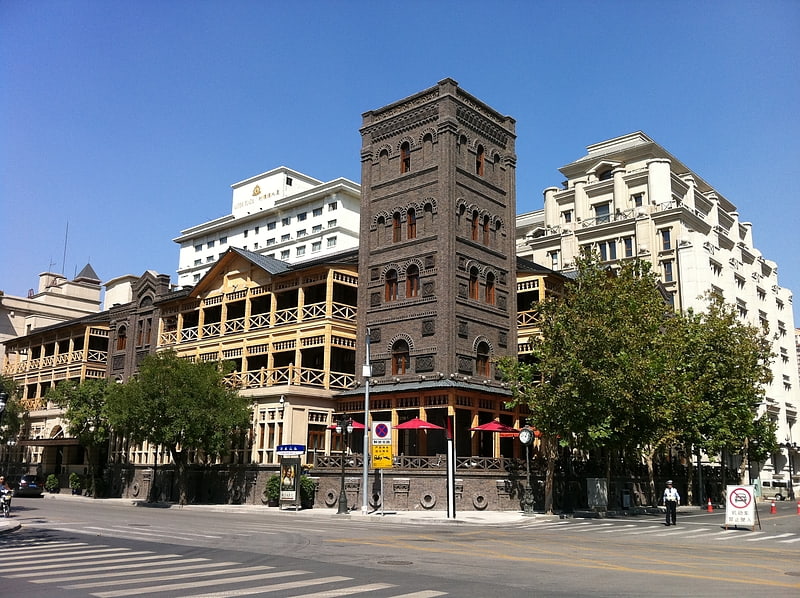
Also known as: 和平区
Heping District is a district in the center of Tianjin, China.
The district has a long history. Its total area is 9.97 km2. There are six subdistricts divided into 88 residential committees.
In history, Heping District is the center of culture, commerce and finance in Tianjin. The Tianjin CBD, shopping centres, and banks are concentrated in this District.
The leader of the district is Li Runlan.
Yaohua High School is located in the district.
All Nippon Airways has its Tianjin Office in Tower 2 of The Exchange in the district.[20]